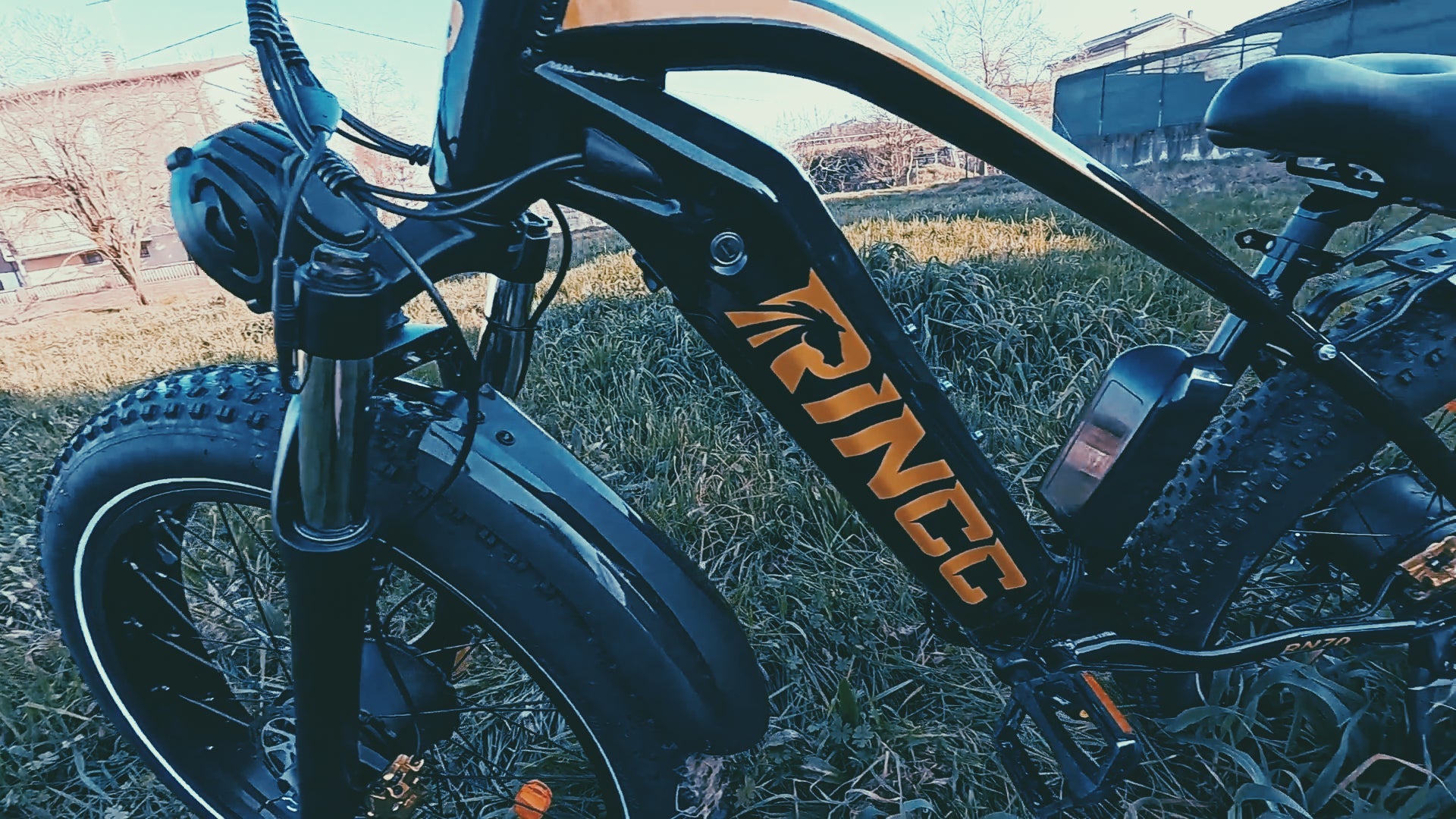Rincc E‑Bike Battery Care: An In-Depth Guide
A well-cared-for battery significantly extends the life and dependability of your Rincc e‑bike. Follow these proven strategies—from the moment you receive it, through daily use, all the way to seasonal storage—to enjoy years of smooth, safe riding.
1. First Ride Prep
-
Charge before use: After shipping and storage, batteries naturally discharge. Always plug in before your first ride—even a quick top-up .
-
Ensure secure fitting: Make certain the battery snaps fully into place as instructed. A loose battery could fall out and be damaged—an avoidable mishap on Day One.
2. Optimal Charge Ranges & Longevity
-
Avoid full discharge and full charge: Keeping the battery between 20–80 % charge greatly extends its lifespan—some reports suggest doubling its useful life .
-
Per-cycle wear: E‑bike lithium-ion batteries typically offer 500–1,000 full discharge cycles before dropping to ~80% capacity.
-
Frequent partial charges are fine: Lithium-ion chemistry doesn’t suffer from “memory effect,” so topping up as needed is ideal .
3. Smart Charging Techniques
-
Let the battery cool (20–30 min) before charging after a ride. Cold charging can harm cells; similarly, charging when hot is suboptimal .
-
Use only original Rincc chargers: Third-party units can damage the BMS or void warranties .
-
Charge in the safe temperature range: Ideally 10–25 °C; avoid charging below 0 °C or above 40 °C .
-
Avoid leaving plugged in overnight indefinitely—most chargers auto-shutoff, but leaving it charging can still stress cells .
-
Charge in safe environments: Use spaces with smoke detectors, avoid flammable surroundings .
4. Cleaning & Contact Care
-
Gentle cleaning only: Remove the battery and wipe with a lightly damp cloth—never use jets or immerse in water .
-
Clean and grease terminals: Clear debris, apply a tiny amount of dielectric grease to safeguard contacts .
-
Inspect for damage: Swelling, cracks, or leaking indicate battery failure—stop use and seek professional assistance .
5. Temperature Considerations
-
Storage range: 15–25 °C is ideal—extremes accelerate ageing .
-
Winter protection: If riding in sub-zero temperatures, insert only when warmed, and remove for storage indoors .
-
Use thermal sleeves: These neoprene covers help maintain stable battery temperature in cold weather .
6. Storage – Short & Long-Term
-
Charge to 40–60% for storage: Batteries stored fully or nearly empty degrade quickly .
-
Check quarterly: Top up to 60% every 2–3 months to prevent deep discharge during long storage .
-
Dry, fire-safe location: Avoid flammable materials and store in a well-ventilated area with smoke detection .
7. Cell Balancing & Conditioning
-
Condition after long storage: Perform a full charge → ride → charge cycle to balance cells and refresh capacity .
-
Understand self-discharge: Lithium cells lose 1–2% charge monthly—more in hot environments, so monitoring is key .
8. Safety & Disposal
-
Never open the battery: Lithium cells are flammable—tampering voids warranties and risks fire .
-
Handle crashes with care: If dropped, batteries may hide internal damage—hot spots or swelling? Stop use and seek a professional check .
-
Recycle properly: Dispose of old or damaged batteries at certified collection points—never trash them .
9. Avoid These Common Mistakes
-
Charging in extreme temperatures (<0 °C or >40 °C)
-
Deep discharges below 10% or leaving fully topped batteries long-term
-
Using non-approved chargers
-
Ignoring battery damage after a crash
-
Leaving it plugged in unattended for days
Battery Care Quick Reference
-
Charge a little after your first ride
-
Always cool battery before charging
-
Maintain 20–80% daily charge, 40–60% for storage
-
Use only Rincc-approved chargers
-
Charge indoors, room temperature
-
Inspect and clean contacts regularly
-
Remove battery in cold storage and recharge periodically
-
Safely recycle when capacity drops or damage occurs

Final Thoughts
Treat your Rincc e‑bike battery as the heart of your electric ride—mindful charging, optimal storage, gentle cleaning, and proper handling will maximise its lifecycle. You’ll enjoy peak performance, safer rides, and better long-term value.
Discover authentic battery accessories, insulated sleeves, certified chargers, and extended care products at www.rinccbike‑eu.com.
Ride safe—and may your battery stay strong!


Share:
What Should You Consider When Choosing Your First E-Bike?
How Do Electric Bike Tires Compare to Traditional Bike Tires?